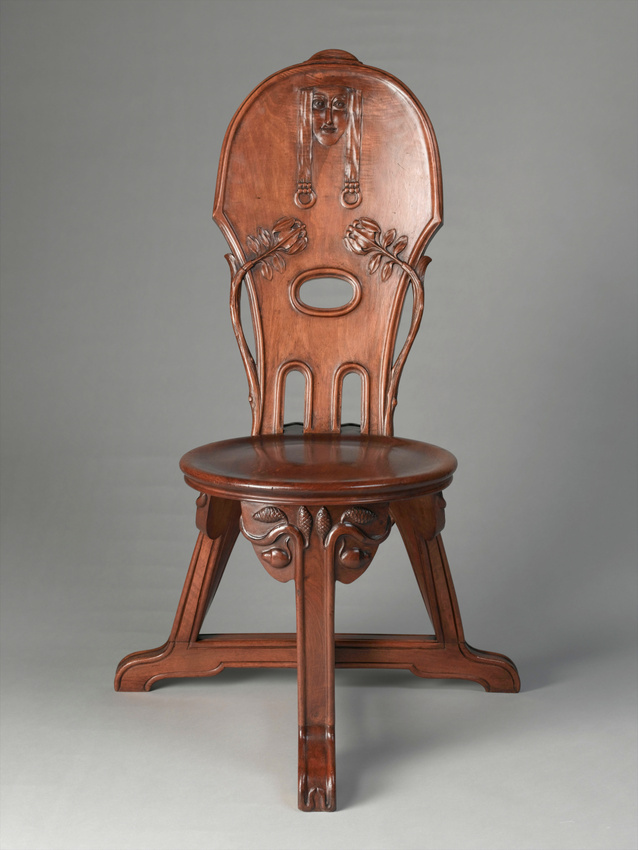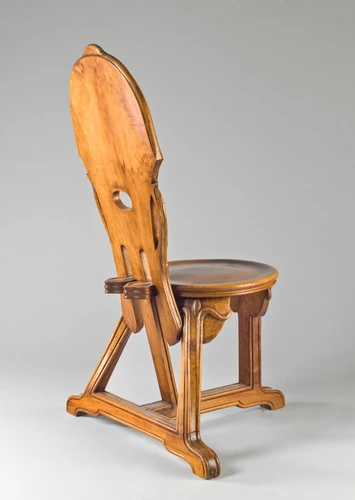Chaise
During the Universal Exhibition in Paris in 1900, two rooms in the Austrian pavilion were dedicated to the regions which would make up the future Czechoslovakia. In fact, it was the first time these regions were allowed to present their artistic production independently. It was for this occasion that Jan Kastner, director of the department of wood at the Ecole Supérieure des Arts Décoratifs in Prague, created this model of a chair.
This chair is a slight variant on those exhibited in 1900. The motifs on the back of those chairs were enhanced with paint, mother of pearl and copper. Was it because of cost that a less "lavish" series was made? Or was it to satisfy a desire for simplicity and authenticity? We do not know, and can only note the unusual flavour of a piece like this, a surprising and bold mix of serious art with popular art. The general shape, a circular seat, resting on three legs, and an openwork back, lightly inclined, cannot but remind one of peasant seats. However, the incisive fretwork, the architectural nature of the different elements, and the system of filling in the seat against the back are reminiscent, through this interplay of filled areas and spaces, of Chinese furniture.
As for the association of a female face with a floral decoration in the carved parts of the back, this is typical of European Art Nouveau. The mask, viewed frontally and with a perfectly symmetrical plant stem on each side, echoes the creative works from Vienna and Glasgow. The hairstyle with two narrow, wavy bands held by a ring, evokes the way in which the Viennese Secession was based on the Hellenic repertoire.





